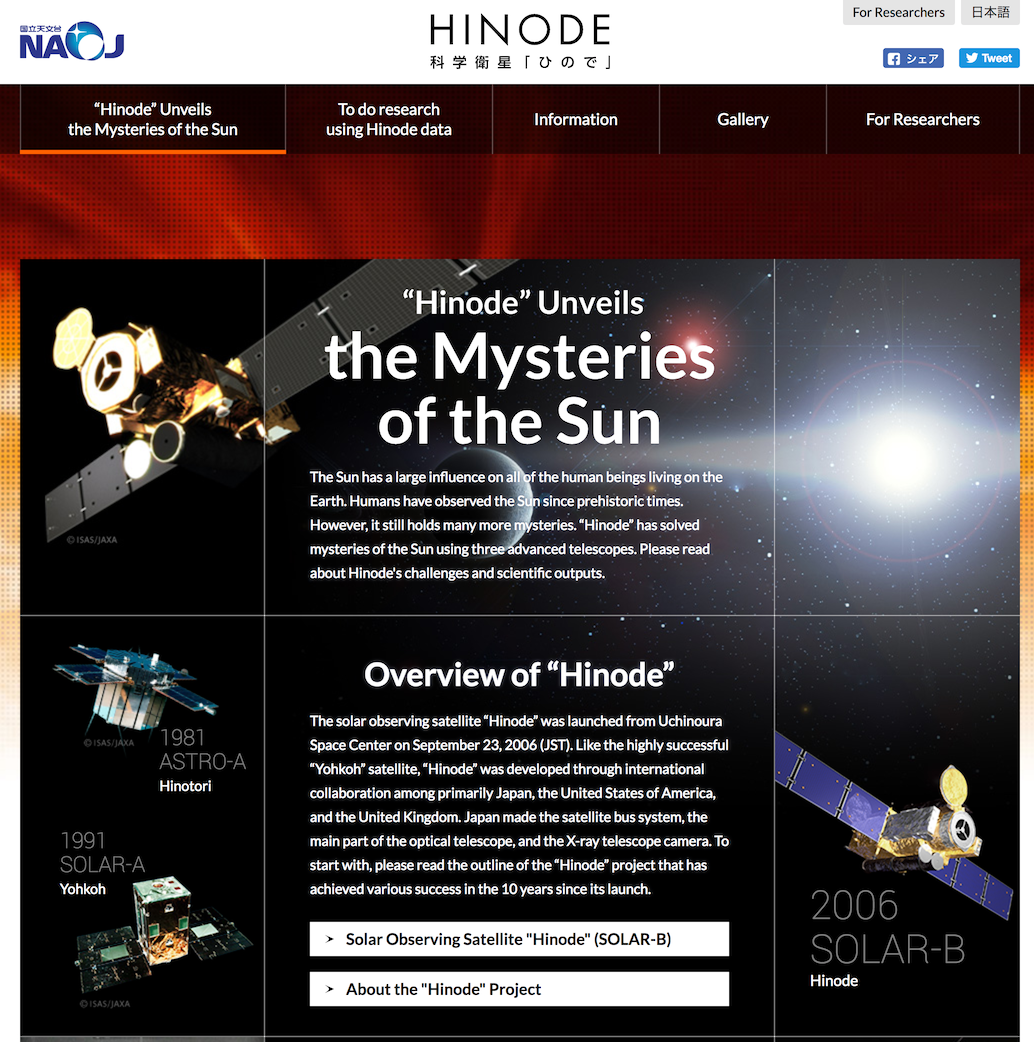National Aeronautics and Space Administration
Marshall Space Flight Center
About the Mission
A public overview of the mission, including important science highlights from the mission, has been developed by the Hinode Science Center (NAOJ) and is accessible at http://hinode.nao.ac.jp/en/intro/. Partnership information and science objectives are provided below.Hinode, Japanese for "Sunrise" and formerly Solar-B, is a solar satellite mission developed, launched, and operated by the Institute of Space and Astronautical Science (ISAS) -- a division of the Japanese Aerospace Exploration Agency (JAXA) -- in collaboration with space agency partners from the National Astronomical Observatory of Japan (NAOJ), the United Kingdom, and the United States.
United Kingdom partners include the Science and Technology Facilities Council (STFC) and Mullard Space Science Laboratory (MSSL) with additional funding and operational support provided by the European Space Agency (ESA) and the Norwegian Space Centre (NSC).
United States collaboration includes the National Aeronautics and Space Administration (NASA), the Lockheed Martin Solar and Astrophysics Laboratory (LMSAL), the Harvard-Smithsonian Center for Astrophysics (SAO/CFA), and the Naval Research Laboratory (NRL). NASA helped in the development, funding, and assembly of the science instruments as part of the Solar Terrestrial Probes (STP) Program within the Heliophysics Division of NASA's Science Mission Directorate. NASA's Marshall Space Flight Center managed the development of instrument components provided by NASA.
Scientific Objectives
Hinode was planned as a mission to build off of the accomplishments of Yohkoh (Solar A) which studied a solar cycle's worth of flares. In particular, its Soft X-ray Telescope (SXT) revealed the truly dynamic nature of the corona -- the outer atmosphere of the Sun in which the Earth resides. Beyond the remarkable fundamental physics laboratory that the Sun presents to us, it is important to study and understand the underlying processes and subsequent potential effects and hazards that we face from transient energetic events (such as GPS, science, and communication satellite interference, lunar astronaut harm, power grid blackouts, etc.).
The Sun's corona is composed of unexpectedly hot (> 1 million Kelvins!), tenuous plasma which is constrained, diverted, and heated by strong magnetic fields and waves. Coronal magnetic fields, anchored in the photosphere, dynamically evolve on large spatial and temporal scales. Reconfiguration of the fields, often via magnetic reconnection, releases enormous amounts of energy in the form of plasma heating and particle acceleration.
Hinode's scientific objective is to study magnetic activities on the photosphere and their coronal consequences. Because of the wide range of spatial scales, temperatures, and conditions involved, one instrument for monitoring solar flare conditions is insufficient. Thus, there are three telescopes aboard Hinode to investigate the role of magnetic fields as drivers of solar eruptions:
1. The high resolution (~0.02 arcsec) Solar Optical Telescope (SOT) was designed to study photospheric magnetic fields using vector magnetic field and white light observations.
2. The EUV Imaging Spectrometer (EIS) observes coronal and transition region plasmas to constrain their temperatures and velocities, particularly in association with magnetic reconnection.
3. And finally, Hinode's X-Ray Telescope (XRT), the successor of SXT, obtains high resolution (~1 arcsec) images of the high-temperature coronal plasma to monitor the transport, storage, and dissipation of magnetic energy in the solar atmosphere.
- NASA Contact: Adam Kobelski
- Page Last Updated: Tuesday, 04 April 2017


